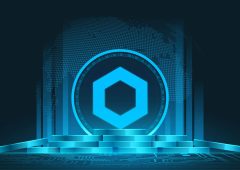Major Banks and Companies Unite for Blockchain-Based Payment Revolution
23.09.2024 19:00 1 min. read Alexander Stefanov
On September 16, 2024, the Bank for International Settlements (BIS) announced the participation of over 40 private companies in the Agorá project, including major players like JPMorgan Chase, Deutsche Bank, Visa, and Mastercard.
Initiated in May 2024, this blockchain-focused project aims to enhance cross-border wholesale payment processes.
The Institute of International Finance (IIF) has brought these private firms together to work alongside seven central banks, including the Federal Reserve, the Bank of England, and the Bank of Japan.
The Agorá initiative is centered on the tokenization of financial assets, which involves transforming them into digital tokens on a blockchain. This approach is intended to improve the speed, transparency, and security of payments.
The project seeks to create a unified ledger that merges tokenized commercial bank deposits with central bank digital currencies (CBDCs), potentially streamlining international transactions and mitigating risks.
Contributions from private sector experts in blockchain and international payments will support the development of a programmable platform that incorporates tokenized assets and employs smart contracts for automated settlements, which could lower transaction costs.
BIS anticipates releasing a comprehensive report by the end of 2025, detailing the project’s design, regulatory challenges, and a technical prototype, which could lead to a future global payment system utilizing blockchain technology.
-
1
Cardano Leads Developer Activity, Ethereum Maintains Ecosystem Dominance
23.06.2025 20:00 1 min. read -
2
Kraken’s Ink Chain Ramps Up Usage as Token Launch Approaches
23.06.2025 18:00 1 min. read -
3
Canton Network Developer Secures $135M to Expand Institutional Blockchain Use
25.06.2025 12:00 1 min. read -
4
Coinbase Brings Cardano and Litecoin to DeFi via New Wrapped Tokens on Base
26.06.2025 18:00 1 min. read -
5
XRP Ledger Sees Sharp Drop in Activity as Key Network Metrics Tumble
26.06.2025 19:00 1 min. read
Top 10 blockchains by transaction volume in June 2025
New data highlights a dramatic lead for Solana in blockchain activity for June 2025. According to the figures, Solana processed a staggering 2.98 billion transactions, far outpacing all other chains in the ecosystem.
Top 10 AI and Big Data Crypto Projects by Development Activity
According to new insights from market intelligence platform Santiment, development activity in the crypto sector’s AI and Big Data segment remains strong, with several major projects showing notable GitHub activity over the past 30 days.
XRP Ledger Deploys EVM-Compatible Sidechain to Expand Multichain Utility
The XRP Ledger (XRPL) has officially launched its Ethereum Virtual Machine (EVM) sidechain on mainnet — marking a major milestone in its effort to bridge XRP’s payment efficiency with Ethereum’s smart contract capabilities.
What the U.S. Blockchain Act Means for Crypto’s Future
The U.S. House of Representatives has taken a major step toward digital asset regulation by passing the Deploying American Blockchains Act of 2025.
-
1
Cardano Leads Developer Activity, Ethereum Maintains Ecosystem Dominance
23.06.2025 20:00 1 min. read -
2
Kraken’s Ink Chain Ramps Up Usage as Token Launch Approaches
23.06.2025 18:00 1 min. read -
3
Canton Network Developer Secures $135M to Expand Institutional Blockchain Use
25.06.2025 12:00 1 min. read -
4
Coinbase Brings Cardano and Litecoin to DeFi via New Wrapped Tokens on Base
26.06.2025 18:00 1 min. read -
5
XRP Ledger Sees Sharp Drop in Activity as Key Network Metrics Tumble
26.06.2025 19:00 1 min. read


